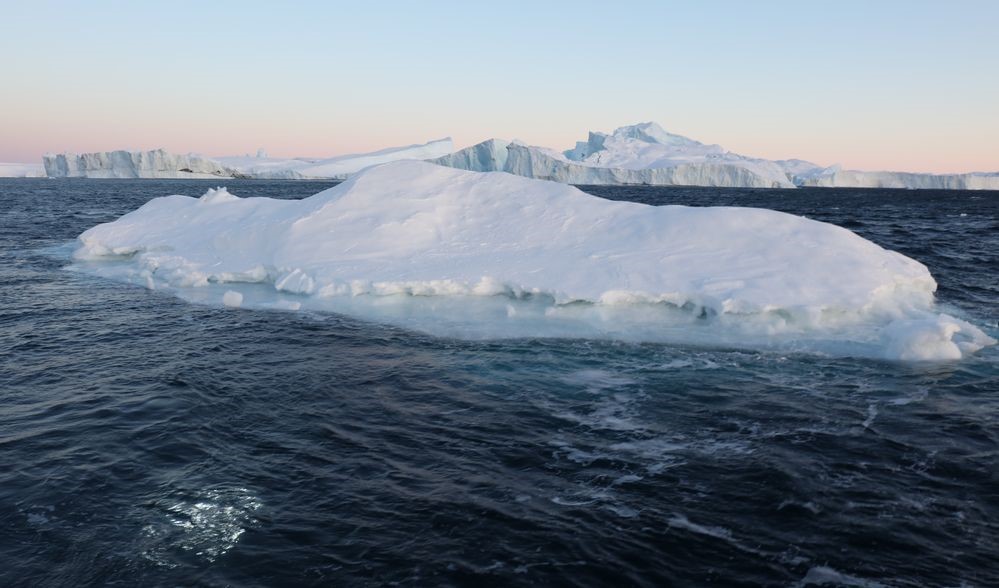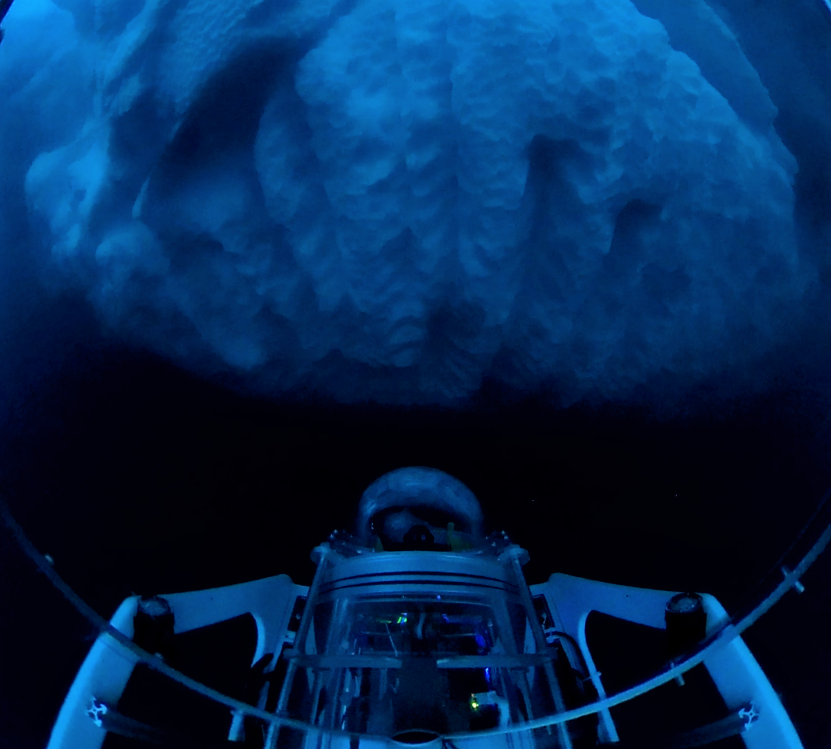Underwater robot reveals surprising new knowledge about icebergs
Using an underwater robot they built themselves, a group of Danish engineering students have photographed a complete iceberg below the ocean surface. This is a breakthrough for international Arctic research.



Contrary to the common belief held by Arctic researchers for many years, Icebergs are not trapezoidal underwater. This has been revealed by a complete 3D scan of icebergs off the east coast of Greenland.
"In fact, what we saw was not even close to trapezoidal, but rather round with a lot of tortuous meltwater-channels, big lumps and deep holes," says Robert Søndergaard, engineering student at Aarhus University.
Together with his project team, he built the underwater robot which, for the first time ever, made it possible to study an iceberg in its full size from all sides.
Robotic design for extremely cold waters
In its current form, the robot can dive to 50 meters, and its design is waterproof so that the technological hardware in the belly of the robot is not damaged. It manoeuvres safely and with great accuracy in extremely cold waters, and at the same time, the specific angle of its lights illuminates the surroundings, allowing for impressive image quality.
All this was achieved in just one semester, but the project team has also had to work hard, as Johan T. Krogshave, another engineering student from the project team says:
"Sure, we’ve been busy. We had to be ready for the expedition after just a few months. The biggest engineering challenge was to keep down the robot's weight and size. But water resistance has also been an issue, because we’ve used materials that expand at different temperatures. Fortunately, we’ve reached all our goals."
The robot is also equipped with a tail in the form of a 100-metre cable transmitting power and data at up to 10 Gbit/s.
Read the article: New research will put an end to allergic reactions
Gigantic lumps with intricate shapes
It is a well-known fact that only the tip of the iceberg is above water. Deep below the ocean surface, lumps of ice are hidden, the size of which can be beyond our comprehension. The surface area of just a single iceberg may be large enough to cover thousands of football fields.
These gigantic blocks are floating around the Arctic Seas, and so far no scientists have been able to say anything with certainty about their size and shape. After talking with one of the university's leading Arctic researchers, the small group of engineering students therefore decided to give science a helping hand.
"We got in touch with some biologists from the university, and this gave us the idea to build a robot that could increase their knowledge about icebergs. To begin with, no one really believed that we would succeed. It was just a bachelor project," says Robert Søndergaard.
But the students worked hard in laboratories and workshops, and they designed and built the robot within a few months. Subsequently, the students went on an expedition to Greenland with a group of researchers, and they have now returned to Denmark with hundreds of images speaking their own clear language. An iceberg is not trapezoidal, but has a shape with magnificent variations.
Read the article: New project will fight Parkinson's disease with LED brain implants
And precisely this insight can be vital in future Arctic research, as Daniel F. Carlson, an iceberg researcher at the Arctic Research Center at Aarhus University says.
"It’s a natural history and research milestone that we now have access to study icebergs underwater. It enriches the scientific insight into icebergs as natural phenomena, but it also allows engineers to develop precise calculation models for how they melt," he says.
Image data can reveal melt patterns
According to Daniel F. Carlson, the underwater robot may become a game-changer for biologists, climate scientists and the maritime industry. With some data processing, the scans of the icebergs enable identification and prediction of melt patterns and movements in water, and this can solve a growing problem in the northern hemisphere.
Claus Melvad, who is a senior professor of engineering at Aarhus University School of Engineering and has worked with underwater robots for many years, agrees:
"Global warming will make the icebergs melt, and this has major consequences for the entire Arctic ecosystem. The melting water forms a layer of fresh water on the salty sea, and this affects solar irradiance through the surface and thus the growth of algae and plankton. With this unique underwater robot, we can acquire detailed knowledge of the specific melt patterns, and of the climate and biological consequences they have," he says.
Another problem associated with melting icebergs is that they become unbalanced and may start to rotate. When this happens, the iceberg will be like a huge mixing machine in the ocean causing danger to maritime traffic.
"In principle, based solely on a satellite picture of the top of the iceberg, we can use our data to simulate the movements of icebergs, and this will enable us to predict when they will pose a danger to maritime traffic," said Kristian K. Sahlholdt, an engineering student at Aarhus University.
The students have just qualified for the world championships in robotic design for university students, which will be held in Austin, Texas in May this year.
CONTACT
Robert Søndergaard, mechanical engineering student, Aarhus University: NorthROV@gmail.com
Claus Melvad, senior professor of engineering, Aarhus University School of Engineering
Daniel Frazier Carlson, postdoc, Arctic Research Centre, Aarhus University
MORE INFORMATION
Read more about the Bachelor’s programme in mechanical engineering
View the project group's presentation video here
